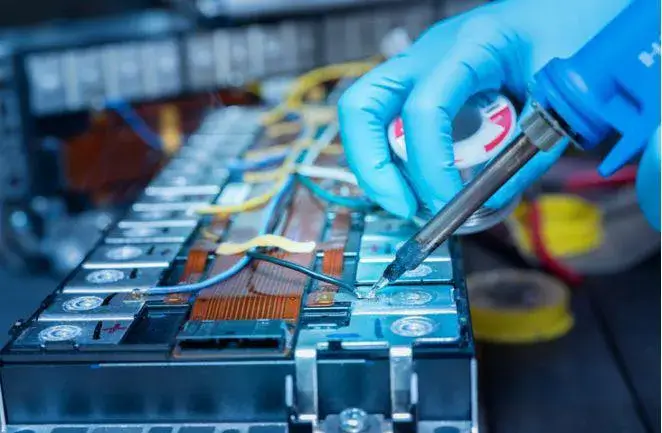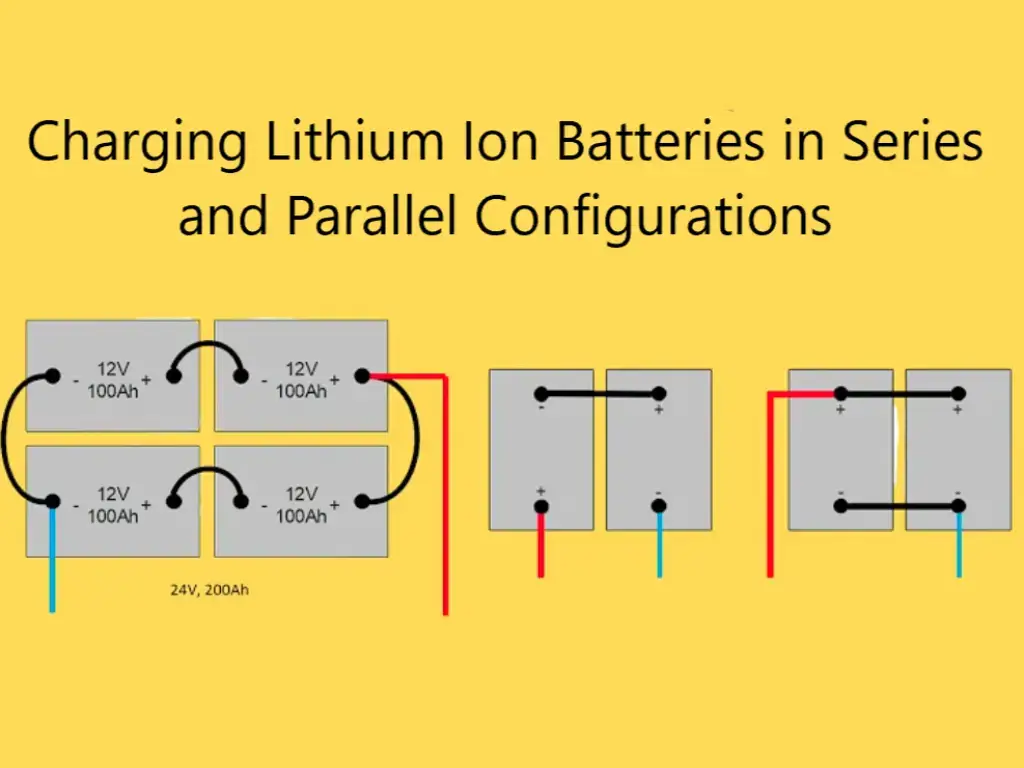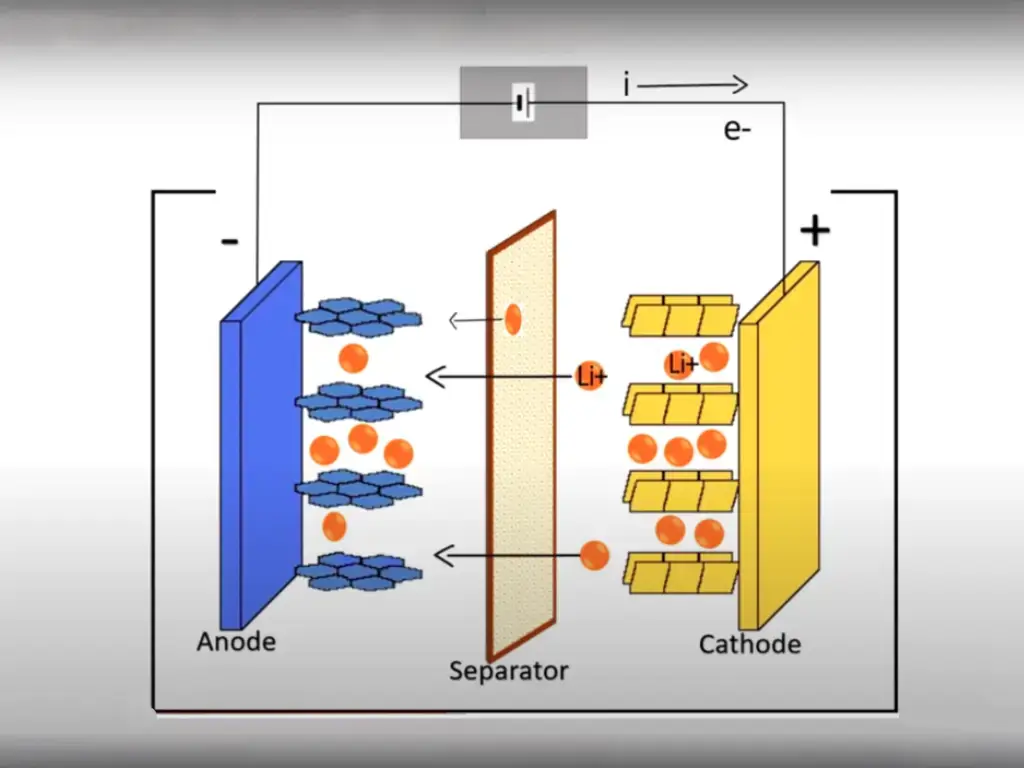Navigating Through Common Reasons For BatteryFailure

There are several common culprits behind lithium-ion battery failure. Overheating during charging or discharging processes can lead to thermal runaway and irreversible damage. Physical damage such as punctures or leaks can also compromise the integrity of the battery cells.
Additionally, age-related degradation and improper handling can contribute to a battery becoming unchangeable. By recognizing these common reasons for battery failure, we pave the way for effective recovery strategies that can breathe new life into seemingly lifeless lithium-ion batteries.
The Chemistry Behind Lithium-Ion Batteries
Lithium-ion batteries have revolutionized the way we power our modern devices, from smartphones to electric vehicles. These rechargeable batteries utilize lithium ions to generate electrical energy through a chemical reaction. One of the key components of a lithium-ion battery is the electrolyte, which allows the movement of ions between the positive and negative electrodes during charging and discharging cycles.
Understanding how lithium-ion batteries work involves grasping the fundamental principles of electrochemistry. When a lithium-ion battery is charged, lithium ions move from the positive electrode (anode) made of graphite to the negative electrode (cathode) typically composed of metal oxides like lithium cobalt oxide.
During discharge, this process is reversed as ions flow back to their original positions, releasing energy that powers devices. The importance of lithium-ion batteries in today’s technology-driven world cannot be overstated.
Their high energy density, lightweight design, and ability to hold charges for extended periods make them crucial for portable electronics and electric vehicles. The chemistry behind these batteries plays a vital role in ensuring efficient energy storage and delivery, making them an indispensable part of our daily lives.
Common Reasons for Lithium-Ion Batteries Becoming Unchargeable
Despite their impressive performance capabilities, lithium-ion batteries are not immune to issues that can render them unchargeable.
One common reason for battery failure is over-discharging, where the voltage drops below a certain threshold leading to irreparable damage to the cells. This can occur due to leaving devices unused for extended periods or using incompatible chargers.
Another factor contributing to unchargeable lithium-ion batteries is physical damage such as punctures or leaks in the battery casing. These vulnerabilities can expose crucial components to air or moisture, leading to internal short circuits that prevent proper recharging.
Additionally, overheating during charging cycles or exposure to extreme temperatures can degrade the battery’s internal structure and inhibit its ability to hold a charge. The impact of manufacturing defects on lithium-ion battery performance should not be underestimated either.
Inconsistent cell assembly or use of subpar materials can result in premature failure and unchargeability issues down the line. Understanding these common reasons for battery malfunctions is essential for implementing effective recovery strategies and prolonging the lifespan of lithium-ion batteries.
Factors Affecting Lifespan and Performance of Lithium-Ion Batteries
Several factors influence how long a lithium-ion battery can maintain its capacity and performance over time. One critical factor is temperature; extreme heat or cold can accelerate degradation processes within the battery, reducing its lifespan. Depth of discharge (DOD) also plays a significant role – frequent deep discharges can strain the battery cells’ structure and lead to capacity loss over time.
Furthermore, charging habits such as using incompatible chargers or exposing the battery to overcharging conditions can cause irreversible damage. Proper maintenance, including regular cycling and avoiding extreme conditions, is essential for maximizing both lifespan and performance.
Signs of an Unchargeable Lithium-Ion Battery
The Telltale Signs: Rapid Draining, Charge Failure, and Overheating
One of the primary indications that a lithium-ion battery may be unchargeable is when it exhibits rapid draining. If you find that your device’s battery is depleting at a significantly faster rate than usual, even after minimal usage, it could be a sign that the battery is failing to hold a charge efficiently.
This rapid draining can be frustrating for users as it leads to frequent recharges and reduced overall device performance. Another key symptom of an unchargeable lithium-ion battery is its inability to hold a charge.
When you notice that your device loses power quickly after being fully charged or doesn’t reach its expected runtime, it could indicate underlying issues with the battery. The failure to maintain a stable charge level over time can affect the usability and reliability of electronic devices powered by lithium-ion batteries.
Overheating is a serious red flag when it comes to lithium-ion batteries. If your device feels excessively hot during or after charging, it suggests potential safety hazards and points towards an unchargeable battery.
Overheating can not only diminish the battery’s lifespan but also pose risks of thermal runaway or even fire in extreme cases. Monitoring temperature changes while using or charging devices powered by lithium-ion batteries is crucial in detecting early signs of malfunction.
Testing Methods for Confirming an Unchargeable Battery
Ensuring Battery Health Through Testing
To confirm whether a lithium-ion battery is indeed unchargeable, various testing methods can be employed. One common approach involves using a multimeter to measure the voltage output of the battery cells.
A significant voltage drop below the expected levels indicates diminished capacity and potential irreparable damage within the cells. Performing load tests on the battery can also help assess its condition accurately.
By applying controlled loads on the battery and monitoring how it responds under different stress levels, you can gain insights into its ability to deliver consistent power output. Any irregularities observed during load testing, such as sudden voltage dips or unstable performance, can point towards underlying issues that render the battery unchargeable.
Furthermore, thermal imaging technology can be utilized to detect temperature variations in different areas of the battery during charging cycles. Anomalies such as localized overheating spots or uneven thermal distribution indicate internal faults within the cells that contribute to charging inefficiency and ultimately render the lithium-ion battery unchargeable.
Safety Measures Before Attempting Recovery
Before embarking on the journey to recover an unchargeable lithium-ion battery, it is crucial to prioritize safety above all else. These batteries can pose risks of thermal runaway, fire, or even explosion if mishandled. Therefore, it is essential to work in a well-ventilated area with fire extinguishing equipment nearby.
Wear appropriate personal protective equipment such as gloves and safety glasses to protect yourself from potential chemical exposure or burns. When handling lithium-ion batteries, avoid sharp tools that may puncture the battery casing and lead to leakage of electrolytes.
It is advisable to use insulated tools specifically designed for working with electronics. Additionally, never short-circuit the battery terminals intentionally as this can cause a rapid discharge of energy and result in heat generation or venting of toxic gases.
In the event of any suspicious odors, smoke emission, or unusual heat during the recovery process, stop immediately and safely dispose of the battery following proper hazardous waste disposal guidelines. Remember that your safety is paramount when dealing with potentially hazardous materials like lithium-ion batteries.
Tools and Equipment for Safe Battery Handling
Having the right tools and equipment at your disposal is essential for ensuring a safe and successful recovery process for unchargeable lithium-ion batteries. A multimeter will be your best friend in assessing the voltage levels of the battery cells accurately before attempting any recovery procedures. This tool will help you identify potential issues within the battery that may be causing it to be unchargeable.
An adjustable power supply capable of delivering low currents is also crucial for slowly reviving over-discharged cells without causing further damage. This allows for controlled charging processes that minimize risks associated with recharging deeply depleted cells too quickly.
Additionally, insulation materials such as electrical tape or heat-resistant gloves can prevent accidental short circuits while handling delicate components. To safely disassemble electronic devices containing lithium-ion batteries, you may need precision screwdrivers, plastic spudgers for prying open casings without damaging them, and anti-static wrist straps to prevent electrostatic discharge that could harm sensitive electronic components within the device.
Steps and Guidelines for the Recovery of Unchargeable Lithium Ion Batteries
Pray, do refrain from subjecting the battery to extreme temperatures, for such treatment may result in damage or, heaven forbid, combustion. It is best to keep the battery at a moderate temperature and shield it from direct sunlight or excessively cold climes.
I must implore you not to attempt to unseal or mend the battery on your own, for such a venture is fraught with peril. Lithium ion batteries harbor perilous substances and should only be handled by individuals of the utmost expertise and equipped with the proper tools and knowledge.
Should the battery prove beyond recovery or use, it is imperative that it be disposed of in the proper manner. Many purveyors of electronic wares and centers for recycling offer programs for the recycling of batteries, and it is of the utmost importance to adhere to local regulations for the safe disposal of such items.
Tips and Best Practices for Maintaining Lithium-Ion
Optimizing Charging Habits for Longevity
Proper charging habits are crucial for maintaining the health and longevity of lithium-ion batteries. Avoid frequent deep discharges, as these can stress the battery cells. Instead, aim for shallow discharges and regular top-ups to keep the battery in its comfort zone.
Also, try not to leave your device plugged in once it’s fully charged, as overcharging can degrade the battery over time. Opt for moderate temperature charging environments rather than exposing the battery to extreme heat or cold.
Storing Lithium-Ion Batteries Correctly
When storing lithium battery, ensure they are at around 50% charge to prevent self-discharge issues. Store batteries in a cool, dry place away from direct sunlight and extreme temperatures.
Avoid storing them in a fully discharged state for an extended period as this can lead to irreversible damage. It’s also advisable to periodically check stored batteries and give them a slight recharge if needed to maintain their health during storage.
Regular Maintenance Checks and Updates
Perform regular maintenance checks on your devices containing lithium-ion batteries. Inspect for any signs of physical damage or leaks that may affect battery performance or safety.
Keep your device’s software up-to-date as manufacturers often release updates that optimize battery performance and efficiency. Additionally, clean battery terminals using a soft cloth or cotton swab dipped in alcohol to ensure proper connectivity.
Conclusion
While dealing with unchargeable lithium-ion batteries may seem daunting, following proper recovery steps and maintenance practices can often revive these power sources effectively. By understanding the chemistry of lithium-ion batteries and implementing best practices for their care, users can extend their lifespan significantly. Remember that patience and caution are key when attempting recovery procedures on unchargeable batteries.
With a proactive approach towards maintaining lithium-ion batteries through optimized charging habits, proper storage techniques, and regular maintenance checks, users can maximize the performance and reliability of their devices’ power source. Embracing these tips not only benefits individual users but also contributes positively towards environmental sustainability by reducing electronic waste generated from prematurely discarded batteries.
FAQ of Unchargeable Lithium-lon Batteries
There are several reasons why a lithium ion battery may become unchargeable, including over-discharging, physical damage to the battery casing, and natural wear and tear over time.
Some steps to recover an unchargeable lithium ion battery include trying a different charger, performing a deep discharge and recharge, using a battery analyzer to check the battery’s health, and considering professional battery reconditioning services.
It is important to avoid exposing the battery to extreme temperatures, refrain from trying to open or repair the battery yourself, and dispose of the battery properly if it is no longer recoverable or usable.
When attempting to recover an unchargeable lithium ion battery, it is important to wear protective gear, work in a well-ventilated area, and follow the manufacturer’s instructions and guidelines.
If you need further assistance with recovering an unchargeable lithium ion battery, consider reaching out to the battery manufacturer, seeking advice from a professional technician or electrician, or researching online forums and communities for practical solutions and insights.





1 thought on “reviving Unchargeable Lithium-lon Batteries: A Master’s Guide”
Sehr guter Beitrag, ist für alle lesenswert die mit li-ion Zellen zu tun haben.
Der im Beitrag beschribene richtige Umgang mit li-ion Zellen ist von grosser Bedeutung für eine lange Haltbarkeit.